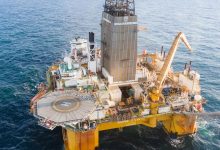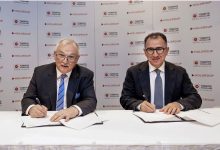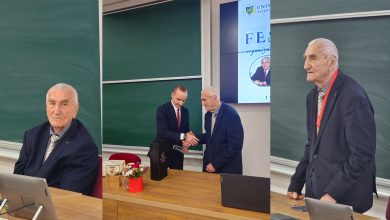MoU on Romania-Serbia Gas Interconnector Construction Project
Romania and Serbia are strengthening energy cooperation by signing the Memorandum of Understanding (MoU) on the gas interconnector construction project.
This strategic project will connect the natural gas transmission system in Serbia, through the Mokrin technological node, with the BRUA line in Romania, opening new opportunities for diversifying energy sources and increasing the competitiveness of gas prices.
The Romanian Government, represented by the Minister of Energy, Sebastian-Ioan Burduja, and the Government of the Republic of Serbia, represented by the Minister of Mines and Energy, Dubravka Đedović Handanović, signed the Memorandum of Understanding on the gas interconnector construction project. The Minister of Energy was accompanied by Transgaz Managing Director Ion Sterian and Hidroelectrica Management Board Chairman Károly Borbély, who held technical talks with their Serbian counterparts. A technical team from Transelectrica was also present.
On Romania’s territory, the gas transmission pipeline will link to the BRUA pipeline (the locality of Petrovaselo, Timis County) and will have a length of about 85 km (the border between Romania and Serbia – Comlosu Mare, Timis County). The pipeline crosses, on the territory of Romania, the following territorial administrative units: Recas, Lenauheim, Remetea Mare, Giarmata, Pischia, Sanandrei, Ortisoara, Satchinez, Biled, Sandra, Gottlob, Comlosu Mare. The pipeline will be designed to ensure a reverse gas flow of at least 1.6 bcm/year (183 000 Scm/h).
Romania and Serbia will make every effort to start construction next year, with the investment expected to be completed by 2028. This project is a major step in strengthening the energy security of both countries and regional market integration by diversifying supply routes.
″Today, Romania and Serbia have taken an important step in interconnecting natural gas transmission systems. The Memorandum is the basis for both countries to start the BRUA-Mokrin investment. At the same time, we are working closely to accelerate electricity interconnections, with all the prerequisites for the full completion of the Resita-Pancevo connection in the first part of 2025. At the end of this year, circuit 2 will be ready, and in the first part of 2025 the entire project will be completed, including circuit 1. This partnership with a reliable historical ally ensures that Romania fully pledges to act as a key player in the region, with a strong, competitive, stable and future-oriented energy sector,” Sebastian Burduja pointed out.
“It is essential that energy flows easily between our countries, which would ensure two essential things: a real, competitive market that will bring the right price to consumers; energy security, de-insularization of energy systems and diversification of supply sources, positioning Romania as a regional leader in the energy sector and provider of geopolitical stability. These elements combined, as well as the infrastructure investment itself, generate confidence and economic growth, jobs and development for the entire region,” Romania’s Minister of Energy said. He added that this investment would offer Romania two benefits for all Romanians: a more competitive market, which will bring the lowest price to consumers, energy security, de-insularization of energy systems and diversification of supply sources.
Romania and Serbia prioritize cross-border energy interconnection. This is essential in a context of overlapping security, geopolitical, climate and economic crises.
Sebastian Burduja also said that in Q1 2024 Romania provided almost 30% of the gas production of the entire European Union. “The national company Romgaz continues to have big plans: Neptun Deep, the EUR 4 billion Black Sea investment, will double Romanian gas production from 2027; and in Caragele, more drilling is underway than ever, with an investment program of over USD 1 billion.”
According to Transgaz’s National Gas Transmission System Development Plan 2021 – 2030, the project ‘Interconnection of the Romanian Gas Transmission System with the similar gas transmission system in Serbia’ will consist of the following:
- Building a new interconnection pipeline in the Recas-Mokrin direction with a length of approx. 97 km, of which approx. 85 km on Romanian territory and 12 km on Serbian territory with the following characteristics:
-pressure in the BRUA pipeline Recas area: 50-54 bar (NP BRUA-63 bar);
-diameter of the interconnecting pipeline: DN 600;
-transmission capacity: max. 1.6 billion Scm/year (183 000 Scm/h), both in the Romania-Serbia and Serbia-Romania directions.
- Building a gas metering station (on Romanian territory).
If gas is taken from Serbia to Romania, it can be directed for consumption in the Timisoara-Arad area, through the DN 600 Horia-Masloc-Recas (25 bar) pipeline, at lower pressures than in the BRUA pipeline.
“Romania has all the assets to be an energy hub in the gas market and a pillar of stability for neighbouring countries. Transgaz is working relentlessly for the completion of the BRUA – Black Sea pipeline on the western border, the Tuzla-Podisor segment being the last missing and the works there being advanced, and for the operationalization of the Vertical Corridor, an alternative to Russian gas for the entire region,” concluded Romanian Minister of Energy Sebastian Burduja.







